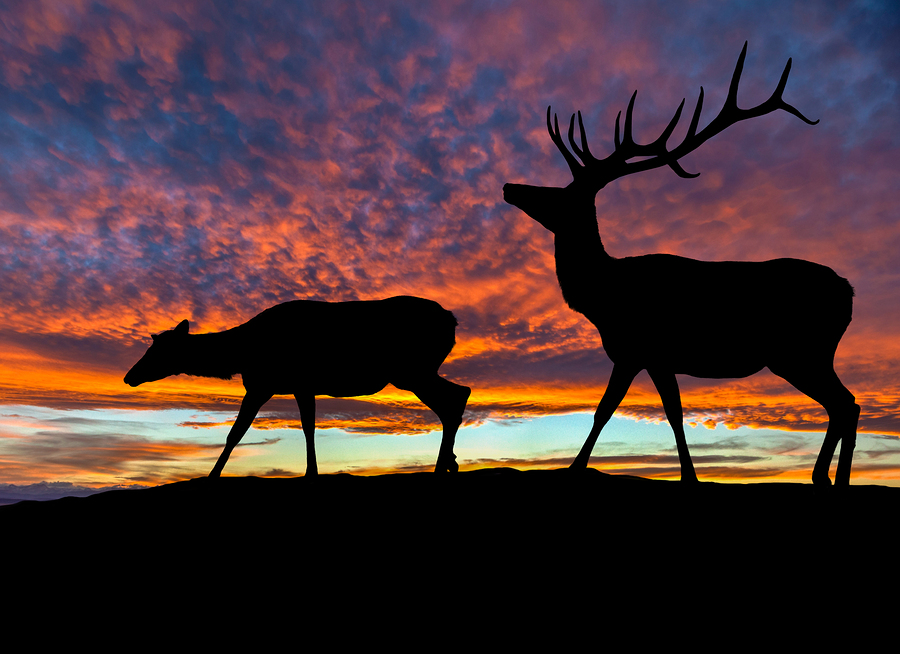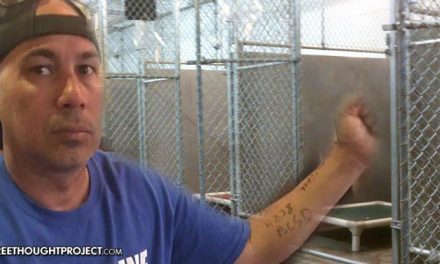Elk are one of the largest species within the deer family. The majestic brown animals have dotted hundreds of square miles of slopes and valleys in Colorado. Biologists used to count over 1,000 head of elk from the air near Vail on their annual elk count.
This year, however, they only saw fifty-three elk. Their notes read:
“Very few elk, not even many tracks. Lots of backcountry skiing tracks.“
Source:
Wildlife managers are quick to point out that the reason isn’t what you might think. It is not predators, herd mismanagement by state agencies, or expanding fossil-fuel development. Instead, the reason is increasing numbers of outdoor recreationists whether they be hikers, skiers, motorcycle riders, Jeep all-terrain vehicles, mountain bikers or hikers.
According to The Guardian, researchers are now starting to understand why:
US national parks and wilderness areas have boomed in popularity in the last decade, with places like Yosemite national park hitting as many as 5 million visits a year. The influx is due to a mixture of visitation campaigns, particularly during traditional “off seasons”, and an explosion of social media exposure that has made hidden gems into national and even international viral sensations.
The impression this has left on wildlife is only recently apparent. And unfortunately, the Vail elk herd may be one of the more obvious examples.
Source:
While outdoor activities have been popular in Colorado for decades, trail use near Vail has more than doubled since 2009. Some trails host as many as 170,000 people in one year. And this recreation takes place 24 hours a day, 365 days a year, according to Bill Andree, Colorado Parks and Wildlife’s Vail district wildlife manager, until he retired in 2018.
Night trail use has increased as much as 30 percent over the last ten years in some areas. Humans are exploring higher up peaks and deeper into the woods.
The noble elk in unit 45, as it’s called, live about 100 miles from Denver, between 7,000 and 11,000 feet on the spruce, pine, and aspen-covered hillsides and peaks of the Colorado Rockies. Their numbers have been falling drastically since the early 2010s.
Meanwhile, outdoor recreation – hiking, biking and skiing – is expected to pump $62.5 billion into the state’s economy in 2019, an 8 percent increase from 2014.
Source:
Bill Alldredge, a now-retired wildlife professor at Colorado State University, believes these outdoor activities are to blame for the rapid decline in elk. He says there is no other explanation. He began studying unit 45 in the 1980s because of expanding ski resorts and trails systems.
To measure the impact on calves, Alldredge deliberately sent eight people hiking into calving areas until radio-collared elk showed signs of disturbance, such as standing up or walking away. The consequences were startling. About 30% of the elk calves died when their mothers were disturbed an average of seven times during calving. Models showed that if each cow elk was bothered 10 times during calving, all their calves would die.1
When disturbances stopped, the number of calves bounced back.
Why, exactly, elk calves die after human activity as mellow as hiking is not entirely clear. Sadly, some likely perish because the mothers, startled by passing humans and their canine companions, run too far away for the calves to catch up, weakening the young and making them more susceptible to starvation or predation from lions or bears. Other times it may be that stress from passing recreationists results in the mother making less milk.
Source:
Andree shared this insight into what is happening with the elk:
“If you’ve ever had a pregnant wife, and in the third trimester you chase her around the house in two feet of snow, you’ll get an idea of what she thinks about it.”
The problems became paramount in 2017, when a group called the Vail Valley Mountain Trails Alliance recommended constructing a new trail through more of unit 45’s elk calving area.
Andree wrote a letter to the group explaining the dire impact of endless recreation on elk. He said:
Even if certain trails were closed during calving season, elk would still be disturbed because some people simply disregarded instructions for them to keep out.
Generally when you ask people to stay out of the area no matter what the reason is, 80-90% obey you. But if you get 10% who don’t obey you, you haven’t done any good.
Source:
Ernest Saeger, the executive director of the mountain trails alliance, said the recreation community recognizes its impact on wildlife and other development. He added:
Many people don’t understand the significance of the closures. Others, he acknowledged, just don’t care.
Consequently, the group created a trail ambassador program to post more educational signs at closures and even put volunteers at trailheads to explain why trails are closed. According to Forest Service numbers, the project decreased closure violations in 2018.
Devin Duval, Colorado Parks and Wildlife’s district wildlife manager in the area, said if trail building and closure violations in critical habitat continue, he anticipates the worst, addiing:
It will be a biological desert.
Some cultures revere the elk as a spiritual force, while other simply feel they ought to be able to live their life without the destructive, all-encompassing impact of human beings. Some places in nature need to be left alone.












